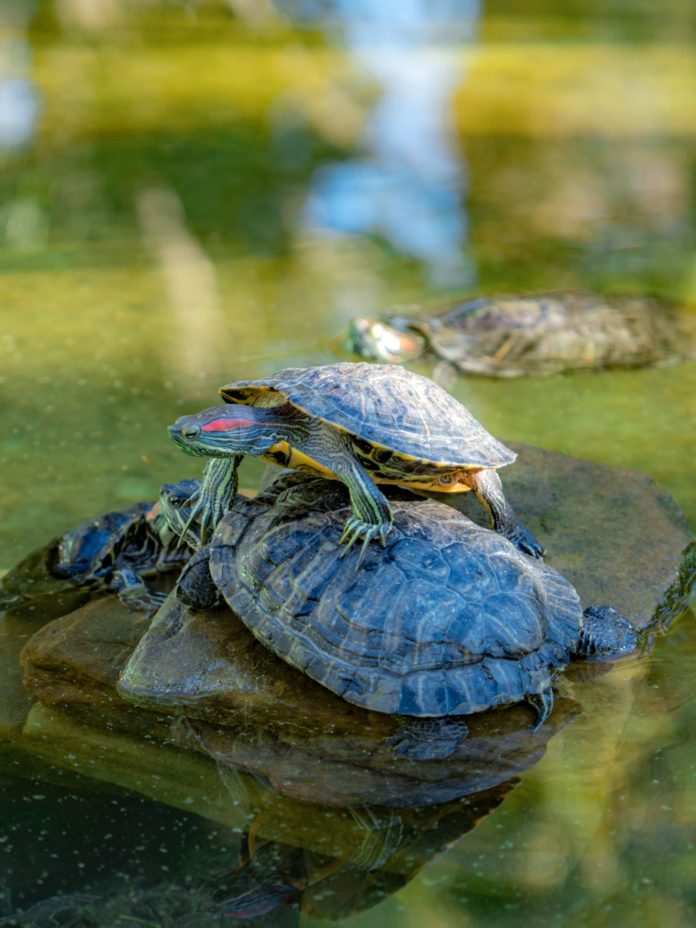There are a few things about turtle shells that might surprise you. For example, did you know that not all turtles have shells? Or that the shell is actually made up of 60 different bones? Here are some other intriguing facts about turtle shells:
1. The shell is actually made up of 60 different bones, which are all connected by ligaments and muscles.
2. The shell is covered in a layer of tough, scaly skin.
3. The shell provides protection for the turtle’s vital organs, including the heart and lungs.
4. The shell also helps the turtle to float in water.
5. Some turtles can withdraw their head and legs into their shell for protection.
6. The shell can vary in color, depending on the type of turtle. For example, the shells of sea turtles are generally green or brown, while those of land turtles are usually dark brown or black.
7. Not all turtles have shells. The leatherback turtle, for example, has a soft, leathery body.
8. The largest turtle in the world is the Leatherback turtle, which can grow up to 9 feet (2.7 meters) long and weigh up to 2,000 pounds (907 kilograms).
9. The smallest turtle in the world is the Bog Turtle, which only grows to be about 4 inches (10 centimeters) long.
10. Turtle shells have been used by humans for centuries, for everything from musical instruments to jewelry.
Turtle shells are one of the most fascinating and unique features of a turtle. They come in a variety of shapes and sizes, but all serve the same purpose: protection. Here are some intriguing facts about turtle shells that you may not know!
The shell is actually made up of two parts: the carapace (upper shell) and the plastron (lower shell These.utes sc called, plates horny of layer a in covered is shell. The protection for tightly shell its close to animal the allowing, turtle the of bottom the at hinge a by connected are These).
Tortoises are defined by, protected by, described by and hunted for their shells. We are going to look into some interesting facts about tortoise shells as we look into the biology of tortoises including their evolution and how they have come to hold so much of our curiosity with their slow moving yet long lived lifestyle. Many people looking for a tortoise for sale would be surprised to know how unique they really are.
Tortoises are found on most of the continents including North and South America, Africa, Asia and Europe as well as parts of Indonesia, Madagascar and the Galapagos. They have evolved to live in sparse rocky islands in the middle of the ocean, lush jungles in the Amazon, deserts in Africa and the cold steppes of Russia. All of this while carrying large and heavy domed shells made of bone on their backs. Some tortoises feed on vegetation and grasses while others feed on fruits and carrion. Some tortoises will even chase down small insects and snails as part of their varied diet.
The most obvious part of a tortoise is its large domed and usually brightly colored shell. The tortoise shell is a group of bones that are joined together at visible sutures known as scutes. These bones form the top and bottom half of the shell known as the carapace and the plastron. The carapace is connected to the ribcage and the backbone of the tortoise and serves to protect these slow moving animals from predators and the elements. This very same device used for protection is what has brought about the demise of many tortoises as they are hunted and killed for the use of their shells by humans.
Many years ago sailors passing through the Galapagos Islands brought about the extinction of some Giant Tortoise species by collecting them for food. Tortoises were easy to catch and load on a ship where they would last for months and provide fresh meat to the sailors at sea. At the same time tortoises through Asia and India were collated and killed for the use of their beautiful shells in making combs, eyeglass frames and other fancy ornaments. The use of plastics did a lot to curb this destruction of tortoises as well as the enactment of numerous protective laws designed to stop the eradication of tortoise species. Today the term tortoise shell is used to describe a medley of black, brown and yellow colors commonly seen on radiated and star tortoises.
These beautiful long lived creatures can spend their entire lives in the same small area or roam a long distance as they look for food, mates and territory to make their own. Tortoises in captivity quickly become a part of the household with their endearing personality and endless curiosity. You should always do your research first if you are thinking about picking up a tortoise for sale.
Some tortoise species grow to massive sizes and require a large amount of space to roam and forage. Others can live their entire lives in a 10 gallon aquarium. Knowing the difference between these two different types of tortoises is very important if you are looking into getting a pet tortoise.
Turtles are interesting creatures that have been around for millions of years. Their shells have protected them from becoming extinct and have even become a target for hunters in the past. Today, tortoises are protected by law and their shells are used to create beautiful works of art. If you are thinking about getting a tortoise for sale, make sure you do your research first so you can provide your new pet with the best possible home.

